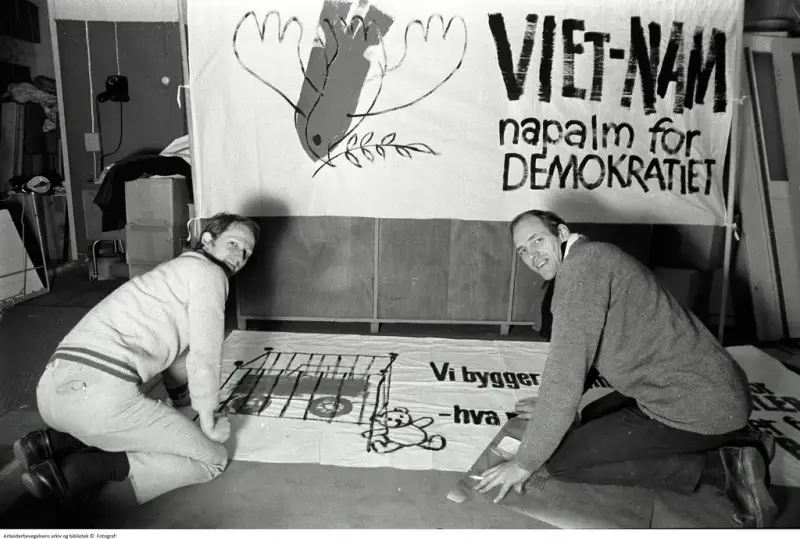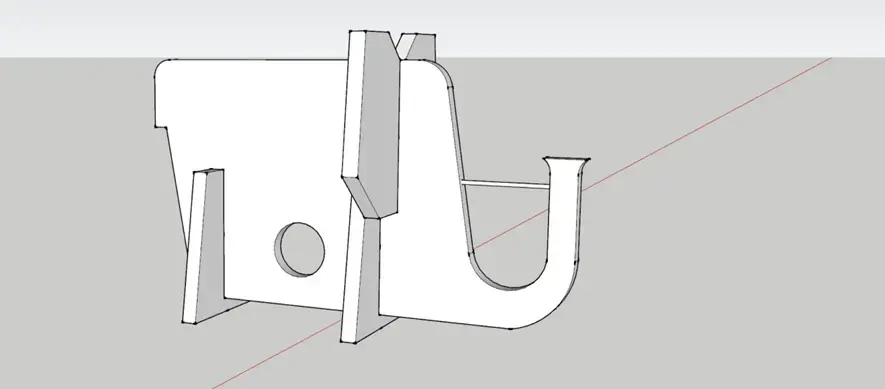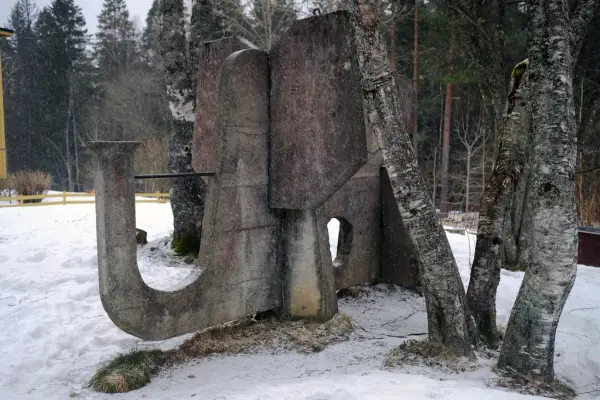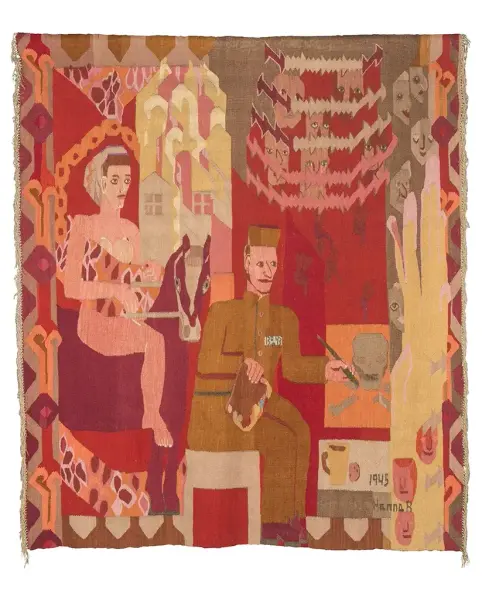Nils Aas
The Elephant, 1968
play sculpture (model)
The lekeskulptur (play sculpture) Elefanten by sculptor Nils Aas was created in the politically significant year of 1968 in Oppsal, a planned suburb of Oslo built after World War II. Not only a sculpture for children, it is made of concrete, and employs ancient block technology, a method naturally used by children to build their own cardboard cutouts. Brutalist in style, it offers a situated, participatory perspective on material and production processes. The ears of the elephant bear the traces of little hands, monumentalizing the participation of children who took part in its creation. Unfortunately, due to further gentrification of the area, in 2012 the play sculpture was moved from its original site. In the archival images in the installation, we see Aas’s radical contrivance: the figure of the elephant was written into the landscape along with two swings and a flagstaff. The simple and open-ended construction offered children plenty of opportunities to engineer their own additions to the playground through planks and paint.
Scandinavia is known for taking childhood seriously. Adventure playgrounds, also known as junk playgrounds, evolved in Denmark in the 1930s during the German occupation as a way to ensure free play within given boundaries, as parents feared that “their children's play might be mistaken for acts of sabotage by soldiers.” After the war, the abundance of leftover building materials from the newly built socialist housing facilitated the organic experimentation of children in the adult activities of progress. By the 1960s, the popularity of adventure playgrounds reached its peak and the play acquired an institutionalized form with playworkers or pedagogues supervising the building and assisting in play, guaranteeing modern safety standards. Back in 1951, on the occasion of the opening of Egon Möller-Nielsen’s The Egg in Stockholm — one of the first play sculptures in Scandinavia — art critic Ulf Hård af Segerstad wrote, “We used to raise huge equestrian statues of worldly rulers. Today, we build play sculptures for our children. It is a beautiful and wonderful human progress.” In the trajectory common to the adult world, Nils Aas moved in the opposite direction after making Elefanten, instead creating sculptures of kings and autonomous solo work. One of his earliest works remains one of his most radical.
Trondheim Kunstmuseum hopes to install a full-scale replica of the original elephant outside the museum’s building for children in Trondheim.
- Yaniya Mikhalina

Finn Graff (left) and Nils Aas paint transparencies for the Socialist Cultural Workers' Association.
30 April 1970. Photographer: Unknown / Arbeiderbladet / Labour Movement Archive and Library.
Nils Aas (he/him, b.1933, Inderøy – 2004, Oslo) was one of the most versatile sculptors in Norwegian modern history. Interested in various materials, styles and subjects, his legacy extends from paper to granite, from the monuments to Haakon VII in Oslo and to Henrik Ibsen in Bergen, and to the design for ten- and twenty-kroner coins. Aas grew up in a family of craftsmen in Inderøy, where both his father and grandfather were renowned cabinetmakers. Although he was expected to take over the family’s furniture workshop, Nils chose a different path and moved to Oslo, first to study at the National School of Arts, Crafts, and Design and then at the National Academy of Fine Arts. Aas’s sculptures in bronze cover a broad spectrum of expression, from caricature to delicate and sensitive, as well as austere and monumental, portraiture. However, it was in wood that Aas really unleashed his visual imagination, ranging from small chess pieces to sculptures such as Sunday Morning, depicting a priest leaning dramatically over the pulpit. Throughout his career, Aas received numerous awards, including the City of Oslo’s Culture Prize in 1972, the Norwegian State Honorary Scholarship in 1984, and the Anders Jahre Culture Prize in 1990. That same year, he was appointed Knight 1st Class of the Order of St. Olav. In 1996, the Nils Aas Art Workshop was inaugurated in Inderøy — intended not as a museum but as a creative space for temporary exhibitions, in accordance with Aas’s own wishes.
Production credits
Nils Aas
Elefanten (The Elephant), 1968
play sculpture (model)
With the permission of Atle Aas, Nils Aas estate
Carpenter: Trygve Jensen, Byåsen Trevare AS


